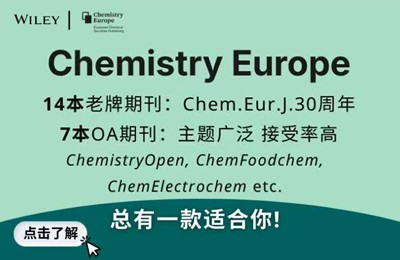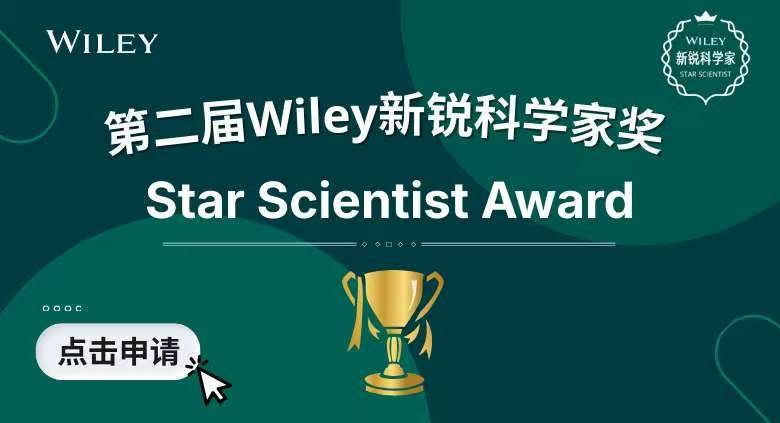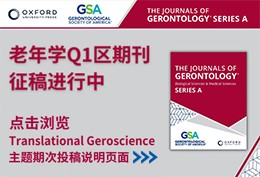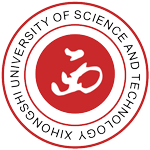-
Digital-Twin-Assisted Insights Into Irreversible Capacity and Activation Strategy Power High-Loading Solid-State Batteries Angew. Chem. Int. Ed. (IF 16.9) Pub Date : 2025-07-30 Yecai Sun, Yanbin Ning, Zhuomin Qiang, Lizhi Xiang, Qingsong Liu, Chaoqun Zhang, Guoce Quan, Yan Zhang, Biao Deng, Geping Yin, Tiefeng Liu, Jiajun Wang, Shuaifeng Lou
-
Photocontrolled Release of Urea Enables the Detection of Urea–Urease Intermediates by Cryo-FTIR Angew. Chem. Int. Ed. (IF 16.9) Pub Date : 2025-07-25 Dr. Caterina G.C. Marques Netto, Sarah Bell, Dr. Caio B. Castro, Pedro Henrique Machado, Dr. Vatsal Purohit, Dr. Katherine M. Davis, Dr. Ana Paula L. Batista, Dr. R. Brian Dyer
-
In Situ Electrochemical Reconstruction of Cation-Vacancy-Enriched Ni@Ni2P Particles in Hollow N-Doped Carbon Nanofibers for Efficient Nitrate Reduction Angew. Chem. Int. Ed. (IF 16.9) Pub Date : 2025-07-24 Rong Gao, Jiangwei Zhang, Guilan Fan, Xiaosong Wang, Fengyu Ding, Yan Guo, Chenhui Han, Yuliang Gao, Ao Shen, Junfang Ding, Prof. Dr. Limin Wu, Prof. Dr. Xiaojun Gu
-
Bulk- and Surface-Engineered Carbon Nitride with Promoted Electron Transfer for NADH Regeneration and Artificial Photosynthesis Angew. Chem. Int. Ed. (IF 16.9) Pub Date : 2025-07-24 Chen Tao, Zhuo Wang, Yexin Dai, Dr. Shaohua Zhang, Dr. Jing Li, Yu Chen, Xinyu Mao, Prof. Jiafu Shi, Prof. Zhongyi Jiang
-
Building a Bridge Between Ambient MS and LC-MS by Non-Exhaustive Microdesorption Angew. Chem. Int. Ed. (IF 16.9) Pub Date : 2025-07-22 Dr. Wei Zhou, Prof. Janusz Pawliszyn
-
Superprotonic Conduction Over Wide Humidity Range Driven by Enhanced Proton Dissociation Angew. Chem. Int. Ed. (IF 16.9) Pub Date : 2025-07-16 Prof. Kun Zhang, Lei Wu, Dr. Ke Gong, Shuyang Bian, Yanting Zhang, Huayu Gu, Dongshuang Wu, Prof. Linfeng Hu, Prof. Huiyuan Liu, Prof. Yusong Wang
-
Volcanic relationship between Co‐carbon layer interaction strength and catalytic activity for olefin hydroformylation AlChE J. (IF 4.0) Pub Date : 2025-05-27 Jiamei Wei, Peng Gao, Shen Wang, Yue Ma, Dong Cao, Daojian Cheng
Metal‐support interaction (MSI) is of great significance for designing the supported metal catalysts with high catalytic activity and selectivity. In this work, the MSI between Co and the carbon layer in armored cobalt nanoparticle catalysts (Co@xC) is effectively regulated based on the channel confinement strategy. Notably, a direct volcanic relationship could be obtained between the MSI strength
-
Constructing micro‐rheological model for lithium‐ion battery electrode slurry for coating window prediction AlChE J. (IF 4.0) Pub Date : 2025-05-27 Yuxin Chen, Haolan Tao, Honglai Liu, Liqing He, Cheng Lian
The composition of lithium‐ion battery electrode slurry determines its rheological properties, which have a significant impact on defect control during the coating process and the final electrode microstructure. Due to the complexity of slurry composition, it is difficult to determine the quantitative relationship between the formulation and rheological properties through experimental analysis. Herein
-
Three‐dimensional computational fluid dynamics study of liquid flow characteristics and flooding behaviors in corrugated packing AlChE J. (IF 4.0) Pub Date : 2025-05-27 Shiji Xu, Cong Gao, Yuxin Zhang, Kehan Wang, Hongkang Zhao, Qunsheng Li, Jiaxing Xue
Fluid flow behavior in packed columns is complex, with notable differences between the constant liquid hold‐up region and the flooding region. This study numerically investigates the gas–liquid flow behavior for various contact angle (CA) and liquid load (L) conditions in both regions, using the volume of fluid‐continuum surface force model. In the constant liquid hold‐up region, CA and L significantly
-
An effective coupling for coproducing aromatics and CO‐free hydrogen in a catalytic membrane reactor AlChE J. (IF 4.0) Pub Date : 2025-05-27 Fangyi Liang, Yan Zhang, Lujian Jia, Akram S. Ghanem, Mengke Liu, Heqing Jiang
Methane dehydroaromatization (MDA) using Mo/zeolite catalysts is a promising technology that enables the direct conversion of methane into valuable aromatics and hydrogen. However, non‐oxidative MDA suffers two main obstacles: thermodynamic limitations and rapid catalyst deactivation. Additionally, oxidative MDA often undergoes undesired oxidation to CO, reducing product selectivity and hindering efficient
-
Green ammonia production via a catalytic membrane reactor: Proof of concept through experiments and simulations AlChE J. (IF 4.0) Pub Date : 2025-05-27 Wei‐Wei Yan, Norihiro Moriyama, Hiroki Nagasawa, Masakoto Kanezashi, Toshinori Tsuru
Ammonia (NH3) plays a vital role in fertilizer production, but an energy‐saving NH3 production process compared to the Haber–Bosch process is urgently being developed. A catalytic membrane reactor (CMR) that integrates the reaction with a Ru (10 wt%)/Cs/MgO catalyst and the membrane separation with a sulfonated (3‐mercaptopropyl)trimethoxysilane (MPTMS) membrane in one unit was used for green NH3 production
-
Identification of volatile cloudy zone in a liquid‐injected fluidized bed by CFD–DEM simulation AlChE J. (IF 4.0) Pub Date : 2025-04-29 Qiushi Xu, Zifeng Li, Xiaoping Guan, Ning Yang, Raffaella Ocone
In liquid‐injected fluidized bed processes, such as ethylene polymerization, it is crucial to quantitatively identify the cloudy zone consisting of gas bubbles, droplets, and wet particles. While various experimental methods exist for measuring relevant parameters, a comprehensive understanding of the characteristics of the cloudy zone remains challenging. This study introduces a particle‐based method
-
Synergistic Regulation of Multi-Interface Chemistry by Functional Carbon Dots for High-Performance Composite Solid Electrolytes Angew. Chem. Int. Ed. (IF 16.9) Pub Date : 2025-04-21 Huaxin Liu, Fangjun Zhu, Yinghao Zhang, Yuming Liu, Yi Zhang, Wentao Deng, Guoqiang Zou, Hongshuai Hou, Xiaobo Ji
-
Histidine-Based “Transfer Stations” at Carbon-Immobilized Metal Particles Enable Rapid Hydrogen Transfer for Efficient Formic Acid Dehydrogenation Angew. Chem. Int. Ed. (IF 16.9) Pub Date : 2025-04-21 Zhenyi Yang, Guoyu Hou, Nana Gao, Yicheng Li, Xingqiu Li, Zitao Chen, Haibao Jin, Ming Zhao, Dongyang Wang, Ke Chen, Markus Antonietti, Tianxi Liu, Zhihong Tian, Yu Zhang
-
Ordered Co-Assembly of Soft-in-Hard Hetero-Structured Pulse Guidance Ion-Accelerator for Dendrite-Free Aqueous Zinc-Ion Battery Anodes Angew. Chem. Int. Ed. (IF 16.9) Pub Date : 2025-04-21 Xiang Li, Jiahao Chen, Tong Wang, Binhang Wang, Yujie Cao, Dongliang Chao, Yun Tang
-
Correction to “Light Enables the Cathodic Interface Reaction Reversibility in Solid-State Lithium-Oxygen Batteries” Angew. Chem. Int. Ed. (IF 16.9) Pub Date : 2025-04-21
Angew. Chem. Int. Ed. 2024, 63, e202319529 https://doi.org/10.1002/anie.202319529 In this research article, the color coding of Mo(IV) and Mo(VI) was incorrect in Figure 5g. Purple color should represent Mo(IV), while green color should represent Mo(VI). The corrected Figure 5 is shown below. Figure 5Open in figure viewerPowerPoint The impact on cathode decay. a) The principal schematic of STXM
-
An Autonomously Liquefied Hydrogel Adhesive for Programmable Bioelectronic Interface Angew. Chem. Int. Ed. (IF 16.9) Pub Date : 2025-04-21 Mengyuan Li, Gongwei Tian, Xuemei Jiang, Dianpeng Qi, Bai Yang, Yunfeng Li
-
Optimizing Molecular Packing and Interfacial Contact via Halogenated N-Glycidyl Carbazole Small Molecules for Low Energy Loss and Highly Efficient Inverted Perovskite Solar Cells Angew. Chem. Int. Ed. (IF 16.9) Pub Date : 2025-04-21 Zhilu Xu, Xiaokang Sun, Wei Hui, Qi Wang, Ping Xu, Weijian Tang, Hanlin Hu, Lin Song, Xiaopeng Xu, Yihui Wu, Qiang Peng
-
Pore Engineering in Isoreticular Titanium-Isophthalate Coordination Polymers Angew. Chem. Int. Ed. (IF 16.9) Pub Date : 2025-04-21 Qingqing Yan, Chenyang Nie, Valentin Diez Cabanes, Fu-An Guo, Yafei Du, Hailun Xia, Hao Wang, Guillaume Maurin, Peng Guo, Sujing Wang
-
Platinum interlayers reduce charge transport barriers between amorphous Ir-oxide OER electrocatalysts and the porous transport layer Chem. Eng. J. (IF 13.2) Pub Date : 2025-04-21 Moritz Geuß, Lukas Löttert, Andreas Hutzler, Julian Schwarz, Jaroslava Nováková, Ivan Khalakhan, Miran Gaberšček, Karl J.J. Mayrhofer, Simon Thiele, Serhiy Cherevko
-
Experimental and computational insights into sustainable lithium recovery and freshwater production via CO2 hydrate-based desalination Chem. Eng. J. (IF 13.2) Pub Date : 2025-04-21 Sol Geo Lim, Donghyun Moon, Chang Yeop Oh, Hye Rim Choi, Chiho Sung, Sun Ha Kim, Kongtae Ra, Minjun Cha, Ji-Ho Yoon
The growing demand for lithium, a critical resource for the renewable energy and electric vehicle industries, necessitates the development of innovative recovery technologies to ensure a sustainable supply of diverse lithium resources. In this study, we propose a CO2 hydrate-based desalination (HBD) process as a sustainable solution for lithium recovery and freshwater production from lithium-containing
-
Polyhalogenated heterocycle additive induced in-situ 3D gelatinous polymerization with polysulfides for shuttle effect inhibited lithium-sulfur batteries Chem. Eng. J. (IF 13.2) Pub Date : 2025-04-21 Xingkai Ma, Xinmei Song, Yaoda Wang, Junchuan Liang, Tianyu Shen, Zuoao Wu, Lina Qin, Huan Li, Tianchen Yu, Huaizhu Wang, Zuoxiu Tie, Yichao Yan, Lin Sun, Zhong Jin
Lithium-sulfur (Li-S) batteries hold immense promise for achieving high energy density and cost-effectiveness; however, they are plagued by rapid capacity fade and decreased efficiency due to the polysulfide shuttle effect. Herein, we report the introduction of a small molecule additive, tetrachloropyrimidine (TCPy), into ether-based electrolytes to trigger in-situ 3D gelatinous polymerization with
-
Janus-structured self-floating hydrogel via thermal localization and arched evaporation interface design toward all-weather efficient solar desalination Chem. Eng. J. (IF 13.2) Pub Date : 2025-04-21 Ning Ding, Jijia Zhu, Yibo Qiao, Dahu Yao, Xiping Gao, Jing Chen, Chang Lu, Xinchang Pang
Solar-driven interfacial evaporation (SDIE) technology offers a sustainable solution for freshwater generation. However, the high thermal management demands of SDIE lead to complex evaporator structures, increasing engineering challenges. Moreover, maintaining a high evaporation rate in all-weather remains a significant issue. In this study, A Janus-structured hydrogel with a porous hydrophobic interior
-
A hemostatic carbon foam prevents postoperative tumor recurrence and metastasis via NIR-II light triggered drug release and hyperthermia Chem. Eng. J. (IF 13.2) Pub Date : 2025-04-21 Xiuxia Wang, Shide Dong, Xinxi Li, Min Wang, Chunjie Yan, Huaming Yang, Yuting Gao
Postoperative tumor recurrence and metastasis have long been challenging issues for cancer patients. In this work, we have developed an implantable carbon foam that uniquely integrates second near-infrared (NIR-II) light triggered drug release, photothermal therapy, and rapid hemostasis by cross-linking a drug-loaded agarose gel with porous carbon foam (DOX@AG/CF). The functionalized carbon foam possessed
-
Advance in design techniques and synthesis strategies of porous carbon positive electrodes for aqueous zinc-ion hybrid capacitors Chem. Eng. J. (IF 13.2) Pub Date : 2025-04-21 Chengcheng Yu, Xiuxiu Chen, Wenya Gao, Kang Liu, Dingxuan Ma
-
In-situ growth of π conjugated-driven indium-organic frameworks for broad-spectrum and high-efficiency extraction Chem. Eng. J. (IF 13.2) Pub Date : 2025-04-21 Yixin Kuang, Suxin Zhou, Xiaoying Feng, Juan Zheng, Gangfeng Ouyang
-
Use of binder stress relaxation parameters and mixture IDEAL-CT for the control of pavement cracking: A case study from a Highway 655 trial in northeastern Ontario, Canada Chem. Eng. J. (IF 13.2) Pub Date : 2025-04-21 Hai Yuan, Hanwalle M.C. Nawarathna, Jianmin Ma, Simon A.M. Hesp
The longevity of asphalt pavements in cold regions is primarily determined by their resistance to cracking which ultimately causes structural failure. Accurately controlling this distress through laboratory tests on binders and mixtures remains a significant challenge. This study aims to analyze asphalt binder and mixture test feasibility in predicting and ranking asphalt pavement trial section cracking
-
An ultrafast dual-channel ratiometric fluorescence probe based on functionalized N-GQDs for dynamic monitoring of salicylic acid in plants Chem. Eng. J. (IF 13.2) Pub Date : 2025-04-21 Hou-Yun Huang, A-ling Tang, Feng Gao, Shuai Tan, Zhi-Min Rao, Li-Wei Liu, Shi-Tao Liu, Xiang Zhou, Lin-Lin Yang, Song Yang
-
Interface reaction constructs iron and phosphorus functionalized zeolite endowing EP with excellent fire safety and mechanical properties Chem. Eng. J. (IF 13.2) Pub Date : 2025-04-21 Qihao Sun, Shanshan Chen, Xiaolong Chen, Linan Dun, Yuanhao Wang
High performance epoxy resin (EP) has a wide range of applications, but it still faces problems of high fire hazard and low mechanical properties. However, the development of high performance EP composites with excellent flame retardancy and mechanical properties remains a challenging task. In this work, a novel phosphorus and iron functionalized natural zeolite flame retardants (Zeolite@PFe) was developed
-
A Phosphoramide-Based Electrolyte with High Affinity towards Li+ and Low Polysulfide Solubility Enables High-Performance Lithium–Sulfur Batteries Chem. Eng. J. (IF 13.2) Pub Date : 2025-04-21 Jie Ren, Congkai Sun, Wenbin Gong, Ji Zhou, Shang Chen, Manyun Wang, Christopher W. Bielawski, Jianxin Geng
-
Deciphering the role of camphor sulfonic acid and triethylamine in Thin-Film composite reverse osmosis membranes for water desalination Sep. Purif. Technol. (IF 9.0) Pub Date : 2025-04-21 Miao-Miao Jia, Si-Yuan Yang, Ke-Ke Chen, Pan-Pan Zhang, Wei Shao, Zhen Chen, Zi-Meng Xu, Qing-Yun Wu, Yi Li, Ming Xue
-
Flue gas resourcing coupled with biomass conversion: catalytic nitrogen-rich pyrolysis of cellulose regulated by O2 concentration Sep. Purif. Technol. (IF 9.0) Pub Date : 2025-04-21 Shanjian Liu, Jia Liu, Wenjing Zhao, Wei Chen, Chengxizi Zhang, Weiming Yi
-
Vacancy engineering mediated VOMnWO4/Mn0.2Cd0.8S S-scheme heterojunction with dual-photo-induced carrier transfer pathways in photocatalytic hydrogen evolution Sep. Purif. Technol. (IF 9.0) Pub Date : 2025-04-21 Qingyang Pang, Youlin Wu, Kangle Li, Xuan Wang, Yachong Wang, Jihuai Wu, Canzhong Lu, Yiming Xie
The sustainable hydrogen (H2) production through semiconductor-based photocatalytic water splitting is recognized as a highly promising approach, however, the rapid recombination of photoexcited charge carriers significantly hindered its practical application. Herein, we construct VOMWO4/Mn0.2Cd0.8S S-scheme heterojunction with dual photo induced carrier transfer pathways through vacancy engineering
-
Continuous long-distance liquid transport along fibers arising from Plateau-Rayleigh instability Chem. Eng. Sci. (IF 4.3) Pub Date : 2025-04-21 Yunqiao Huang, Xianguo Li, Zhongchao Tan
-
A Transformer-based fault detection method built on real-time data from microreactors Chem. Eng. Sci. (IF 4.3) Pub Date : 2025-04-21 Feiyang Chen, Zhichao Zhu, Fakun Qu, Lei Ni, Juncheng Jiang, Zhiquan Chen
Microreactor technology has garnered significant attention for its efficiency and precision in chemical production. However, research on data analysis within microreactors remains limited. Fault detection and diagnosis is crucial for ensuring safety in the chemical industry. Although many fault detection algorithms based on reconstruction deep learning methods have been proposed and tested using simulated
-
Au147(SPh)30(PPh3)12: A Geometrically Closed, but Electronically Open Triple-Shell Icosahedral Gold Cluster and its Geometrically Open Counterpart Angew. Chem. Int. Ed. (IF 16.9) Pub Date : 2025-04-20 Markus Strienz, Andrei Poddelskii, Bridget K. Moll, Claudio Schrenk, Phillip S. Thomas, Andre Z. Clayborne, Andreas Schnepf
-
S-Vacancy-Induced “Proton Fence Effect” Enables Selectivity Switching between CH4 and CO in Photo-Assisted CO2 Electroreduction Angew. Chem. Int. Ed. (IF 16.9) Pub Date : 2025-04-20 Shengqi Liu, Zhenyan Guo, Zhengyi Li, Song Yang, Dingsheng Wang, Hu Li
-
Cu-Facet Selective Sulfur Chemistry for Ultrastable Sodium–Sulfur Batteries J. Am. Chem. Soc. (IF 15.6) Pub Date : 2025-04-20 Xin Xu, Shiying Ren, Huan Li, Shi-Zhang Qiao
-
Macrophage-camouflaged nano-gasholder mediates a differentiated delivery of nitric oxide for blocking cancer-bone crosstalk and bone metastases Chem. Eng. J. (IF 13.2) Pub Date : 2025-04-20 Junmei Zhang, Bingbing Zhao, Jingqian Li, Yiqing Xiao, Yanran Xing, Yecheng Tang, Xin Liu, Xuanchenye Zhang, Dechun Huang, Wei Chen, Yinan Zhong
-
Microfluidic-oriented assembly of MXene composite fibers for flexible zinc ion supercapacitors with high energy density Chem. Eng. J. (IF 13.2) Pub Date : 2025-04-20 Fanyu Xie, Yuan Du, Menghan Chu, Xiaoyu Jia, Hui Cao, Rui Zhang, Hongwei Li, Mei Zhang
-
Suppressing undesired solid byproducts formation in Maleic anhydride processing Chem. Eng. J. (IF 13.2) Pub Date : 2025-04-20 Riddhesh Patel, Phil Pike, Michael Call, Kim Stutsman, Nasser Al-Azri, Glenn Cormack, Nico Proust, Robert Enick, Götz Veser
-
Microplastics in livestock manure and compost: environmental distribution, degradation behavior, and their impact on antibiotic resistance gene dissemination Chem. Eng. J. (IF 13.2) Pub Date : 2025-04-20 Xiaoyue Tang, Xingyun Yuan, Wanyou Lu, Xin Wen, Yinbao Wu, Tao Chen
-
Functional UiO-66 calcium alginate spheres for efficient remediation of lead and cadmium contaminated soil based on adsorption and acetic acid recycling: Mechanism, optimization and risk assessment Chem. Eng. J. (IF 13.2) Pub Date : 2025-04-20 Xi Wang, Mingyu Ma, Juan Wu, Peng Li, Zedong Qian, Wenjing Sang, Shihong Xu, Dengxin Li
-
Advancing water treatment: Ozone nanobubbles for geosmin and 2-methylisoborneol control Chem. Eng. J. (IF 13.2) Pub Date : 2025-04-20 Meryem Soyluoglu, Clinton F. Williams, Tanju Karanfil
Nanobubbles (NBs) possess unique characteristics, including high interfacial area, long-term stability, and generation of reactive oxygen species, for various applications in water treatment. This study investigated the application of ozone NBs to remove two common taste & odor (T&O) compounds, geosmin and 2-methylisoborneol (MIB), in water treatment. The efficacy of ozone NBs to conventional ozone
-
Efficient solar-driven interfacial evaporation and desalination by a low-cost and durable biochar/melamine foam Sep. Purif. Technol. (IF 9.0) Pub Date : 2025-04-20 Kuo Ning, Jing Li, Yanli Fu, Mengshi Su, Xinge Li, Xuguang Li, Wen Song, Liangguo Yan
-
Extraction and purification of short DNA fragments from plasma using aqueous two-phase systems for liquid biopsy Sep. Purif. Technol. (IF 9.0) Pub Date : 2025-04-20 Rafaela Meutelet, Lea J. Bisch, Benedikt C. Buerfent, Johannes Oldenburg, Timo Hess, Heiko Rühl, Jürgen Hubbuch
-
Optimized M-CeO2 (M = Mn, Co, Ni, and Cu) catalysts for enhancing the oxidation of alkane VOC (n-pentane): Synergistic effects of doping, interfacing, defects, atom-burry, and redox pairs Sep. Purif. Technol. (IF 9.0) Pub Date : 2025-04-20 Chao Hu, Zihao Hu, Yinggui Zhang, Erhao Gao, Jing Li, Wei Wang, Jiali Zhu, Shuiliang Yao, Zuliang Wu
-
Mechanism of punicalagin adsorption on novel baobab-derived green adsorbents: Insights from a mass transfer model approach Sep. Purif. Technol. (IF 9.0) Pub Date : 2025-04-20 Balarabe B. Ismail, Wenjun Wang, Yunfeng Pu, Mingming Guo, Donghong Liu
The demand for purified polyphenols is growing due to their diverse bioactive potential. However, conventional purification methods using synthetic adsorbent resins face rising operational costs, sustainability, and environmental challenges, highlighting the urgent need for greener and more sustainable alternatives. Here, novel and low-cost green adsorbents for polyphenol purification were prepared
-
Application of parallel-type hydrophilic rayon sheet on non-packing scrubber and electrostatic precipitator for gaseous pollutant and particulate removal Sep. Purif. Technol. (IF 9.0) Pub Date : 2025-04-20 Gwamgtaek Lee, So-Hee An, Yeawan Lee, Yewon Park, Bangwoo Han, Jungho Hwang, Hak Joon Kim
-
Enzyme-grafted nylon membranes for sequential filtration of Tetraselmis chui extract with enhanced protein recovery Sep. Purif. Technol. (IF 9.0) Pub Date : 2025-04-20 Tim Schreiber, Martin Schmidt, Andrea Prager, Alexia Poidevin, Estelle Couallier, Agnes Schulze
-
In-situ growth of covalent organic frameworks on dibenzo 14-crown-4-ether polyimide electrospun nanofiber membranes for the efficient recovery of lithium ions Sep. Purif. Technol. (IF 9.0) Pub Date : 2025-04-20 Jiahui Du, Junyuan Hua, Feidong Yang, Jintao He, Bo Dong, Xiaohua Ma, Jianxin Li
-
Upcycling of Polyethylene through Sustainable Introduction of In-Chain Amides Using Zeolite Catalysis ACS Sustain. Chem. Eng. (IF 7.3) Pub Date : 2025-04-20 Robin Lemmens, Neal Strijckmans, Robin Coeck, Wouter Stuyck, Dirk De Vos
-
A new operating mode of NETmix for active mixing under batch operation Chem. Eng. Sci. (IF 4.3) Pub Date : 2025-04-20 Isabel S. Fernandes, Joana Matos, Madalena M. Dias, José Carlos B. Lopes, Ricardo J. Santos
-
Analysis of integrated calcium looping alternatives in a cement plant Chem. Eng. Sci. (IF 4.3) Pub Date : 2025-04-20 Ana Amorim, Rui M. Filipe, Henrique A. Matos
-
Effects of Different Alcohol Solvents on the Micromorphology of MnMoO4 and Their Electrocatalytic Performance in Ammonia Synthesis Ind. Eng. Chem. Res. (IF 3.9) Pub Date : 2025-04-20 Cuilian Sun, Huhu Yin, Xiujing Xing, Yaokang Lv, Wei Xiong, Hao Li
-
Unexpected Activities of CYP152 Peroxygenases Toward Non-carboxylic Substrates Reveal Novel Substrate Recognition Mechanism and Catalytic Versatility Angew. Chem. Int. Ed. (IF 16.9) Pub Date : 2025-04-19 Yuanyuan Jiang, Piqian Gong, Zijia Li, Zhong Li, Yuxuan Li, Binju Wang, He Huang, Wei Peng, Xiang Gao, Shengying Li
The study unveils novel aromatic hydroxylation and dehalogenation activities of CYP152 peroxygenases toward various aromatic pollutants without any carboxyl group. Mechanistic analyses provide new insights into non-carboxylic substrate-assisted acid-base catalysis for hydrogen peroxide activation, inspiring potential applications in industrial biocatalysis and environmental remediation.
-
Scalable and Ultrathin Dual Entangled Network Polymer Electrolytes for Safe Solid-State Sodium Batteries Angew. Chem. Int. Ed. (IF 16.9) Pub Date : 2025-04-19 Congcong Liu, Shufeng Jia, Tingzhou Yang, Jiabing Liu, Xinrui Zhou, Zhifeng Wang, Haochen Dong, Zhenjia Shi, Yongguang Zhang, Zhongwei Chen
-
Liquid–Liquid Phase Separation-Mediated Cellular-Scale Compartmentalization of Hydrogel Covalent Cross-Linking Promotes Microtubule-Based Mechanosensing J. Am. Chem. Soc. (IF 15.6) Pub Date : 2025-04-19 Jianyang Zhao, Yuan Hu, Hao Li, Caikun Liu, Zhiqiang Nie, Zekun Chen, Qiangjun Ling, Zhuo Li, Pengchao Zhao, Bin Song, Kunyu Zhang, Liming Bian
-
From Hydrogel to Crystal: A Molecular Design Strategy that Chemically Modifies Racemic Gel-Forming Peptides to Furnish Crystalline Fibrils Stabilized by Parallel Rippled β-Sheets J. Am. Chem. Soc. (IF 15.6) Pub Date : 2025-04-19 Tuan D. Samdin, Jacek Lubkowski, Caleb F. Anderson, Joel P. Schneider
-
Harnessing the Deubiquitinase USP1 for Targeted Protein Stabilization J. Am. Chem. Soc. (IF 15.6) Pub Date : 2025-04-19 Chao Qian, Zhen Wang, Yan Xiong, Dingpeng Zhang, Yue Zhong, Hiroyuki Inuzuka, Yihang Qi, Ling Xie, Xian Chen, Wenyi Wei, Jian Jin















 京公网安备 11010802027423号
京公网安备 11010802027423号